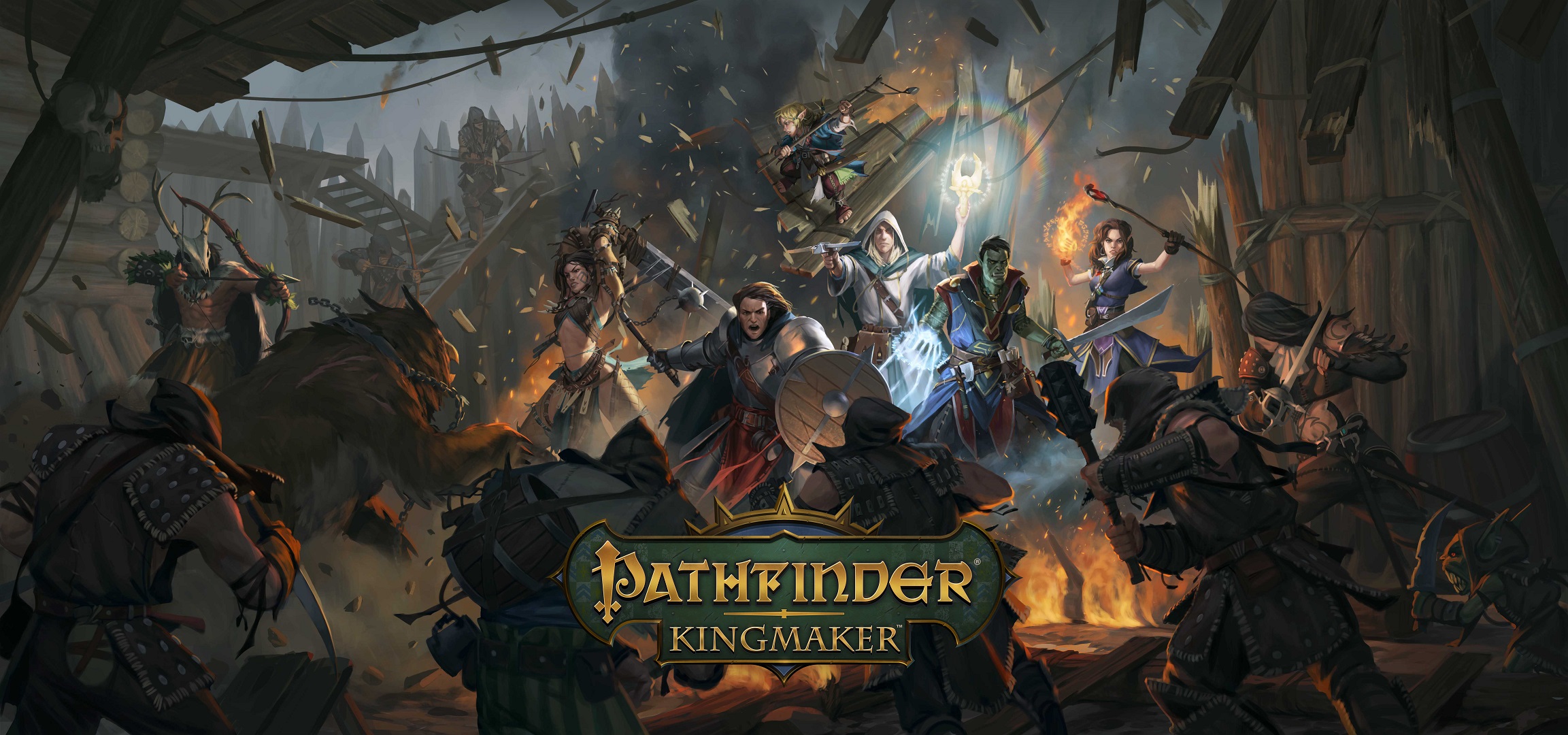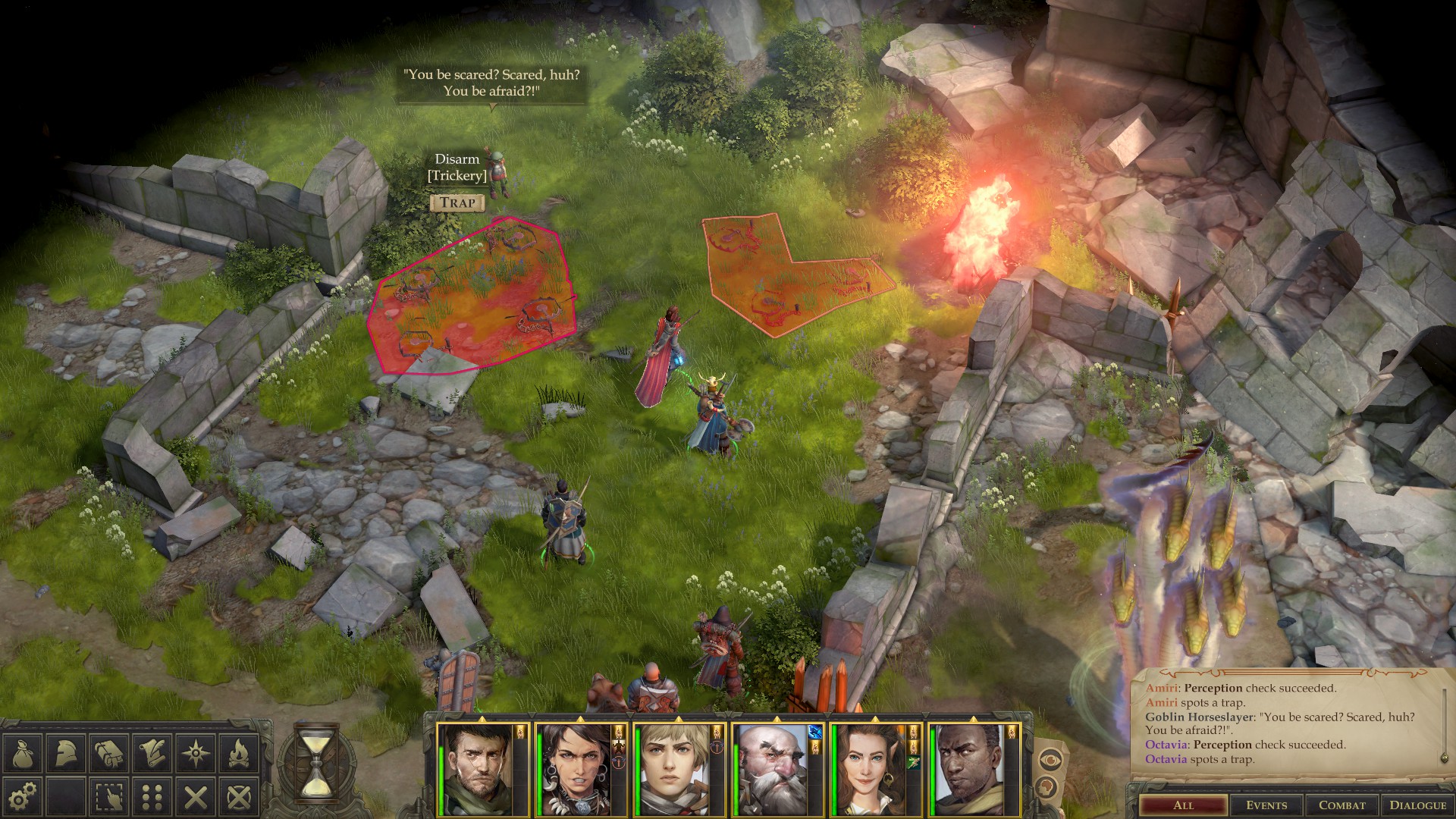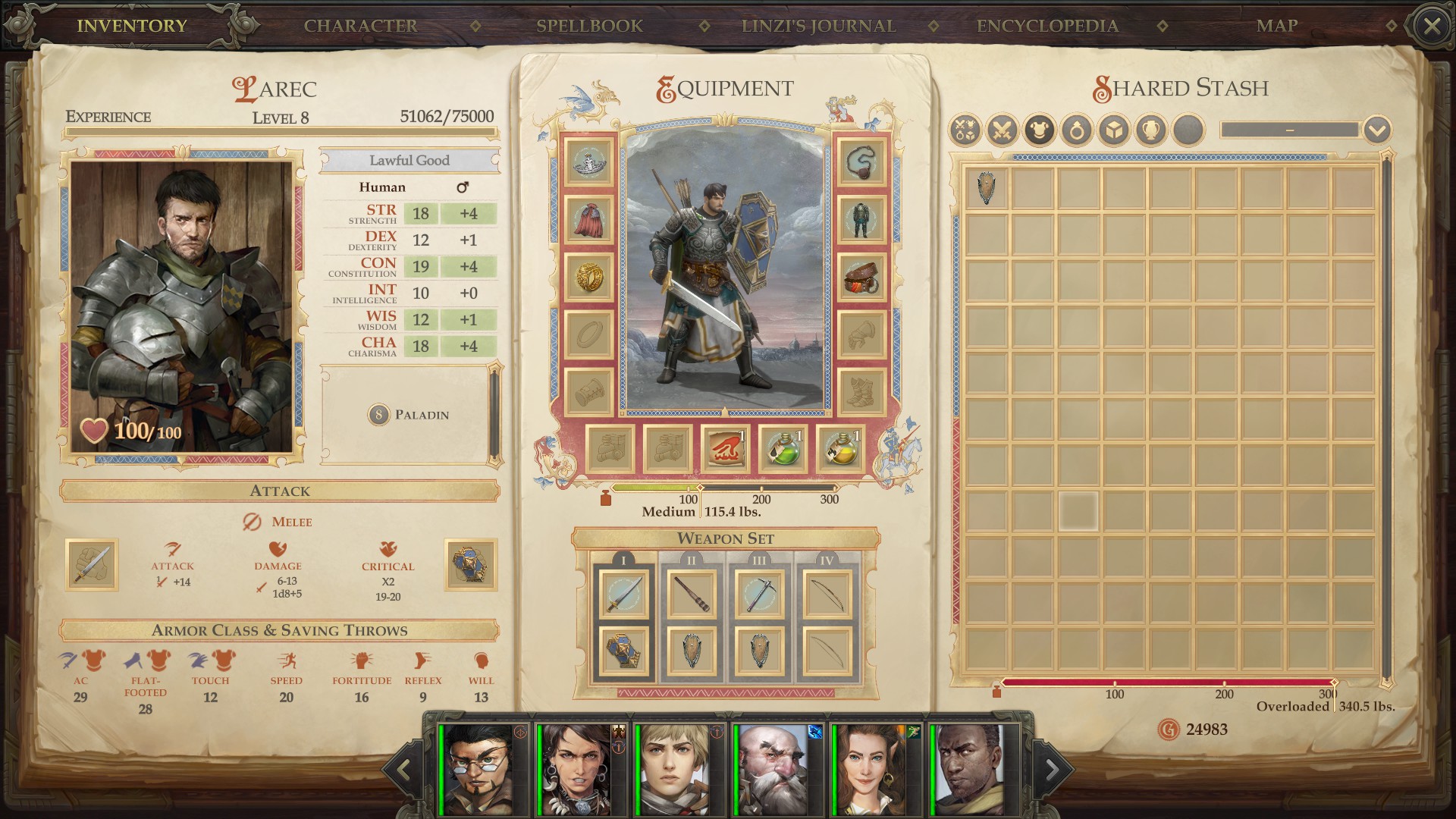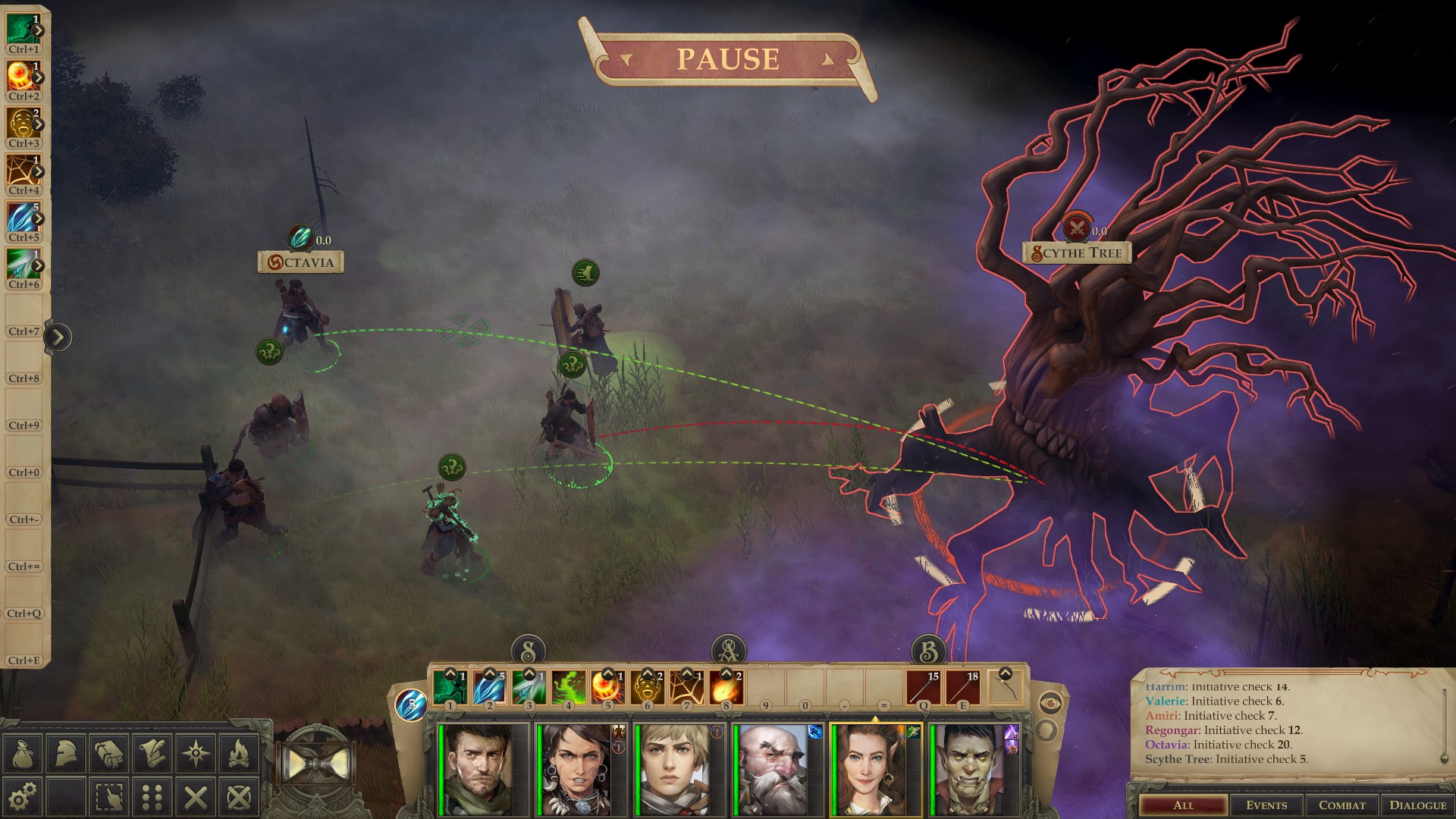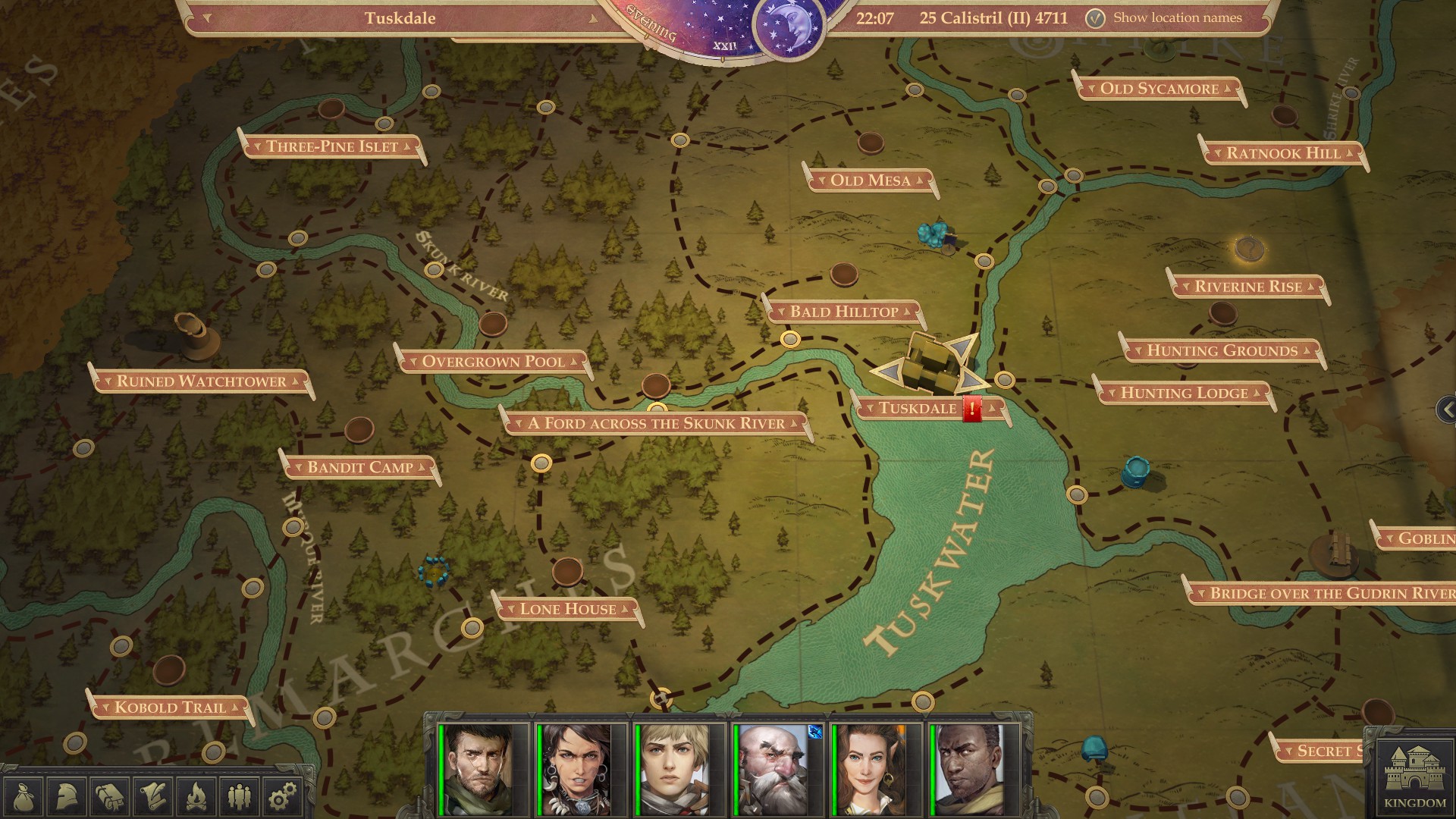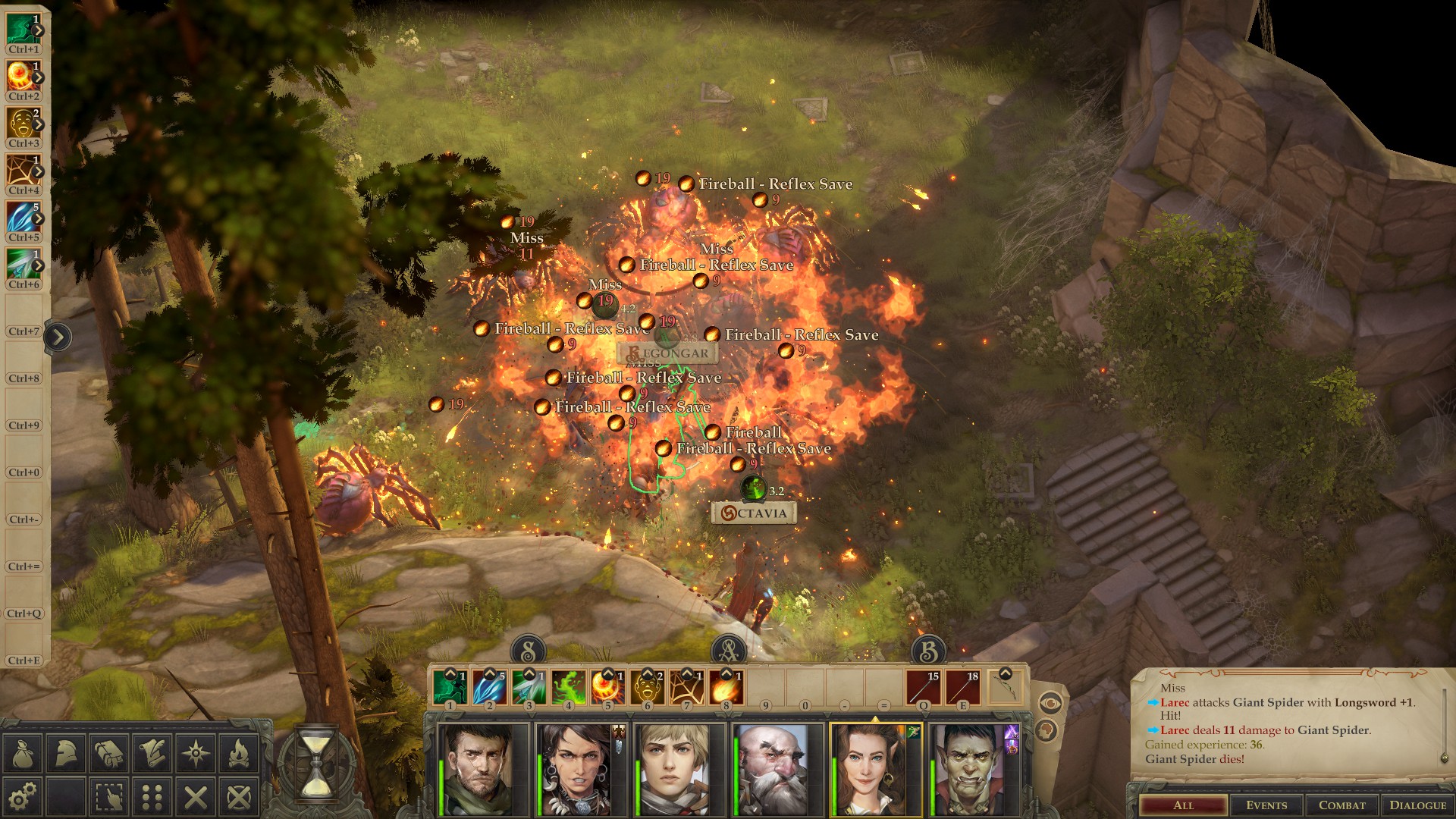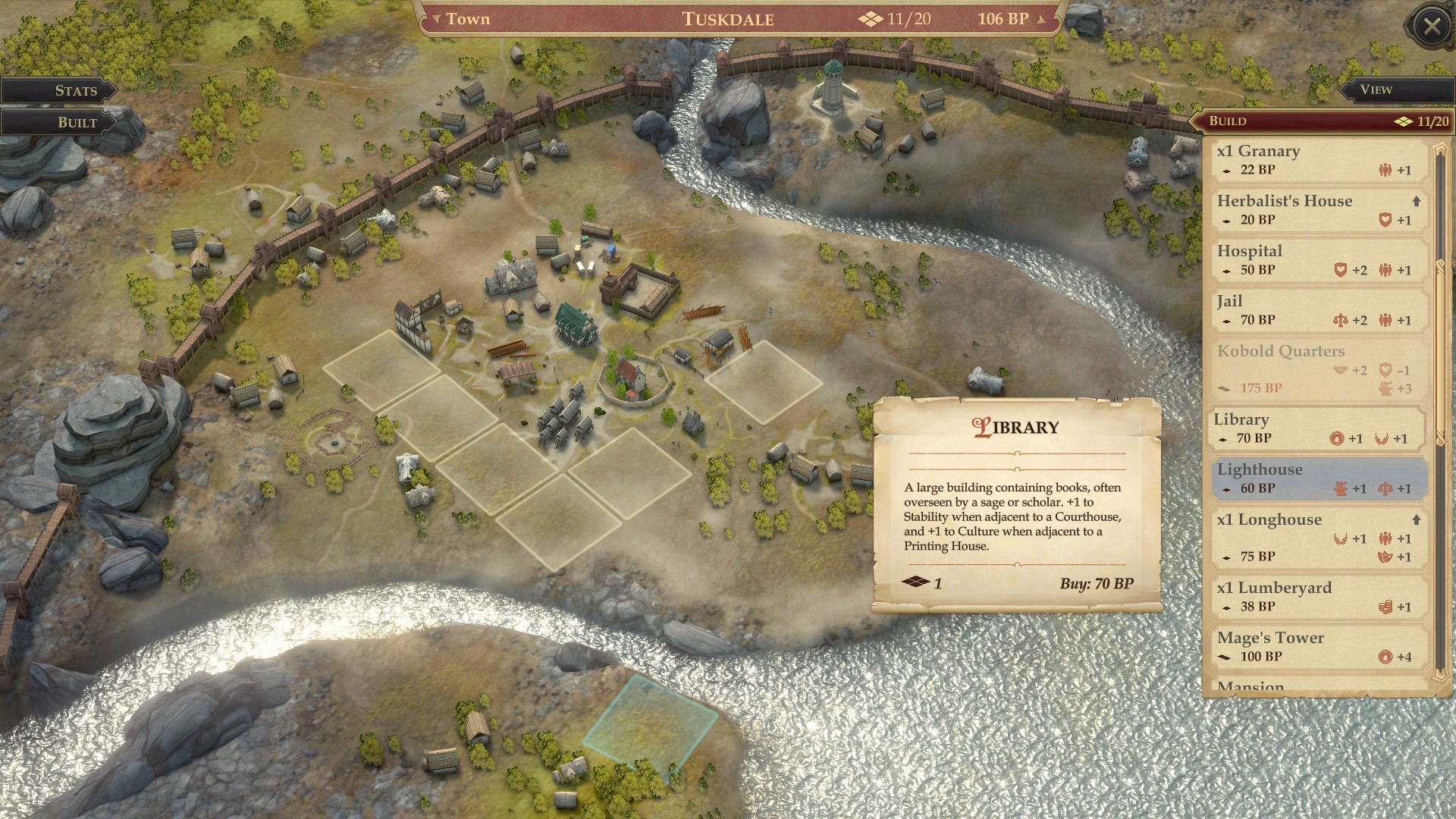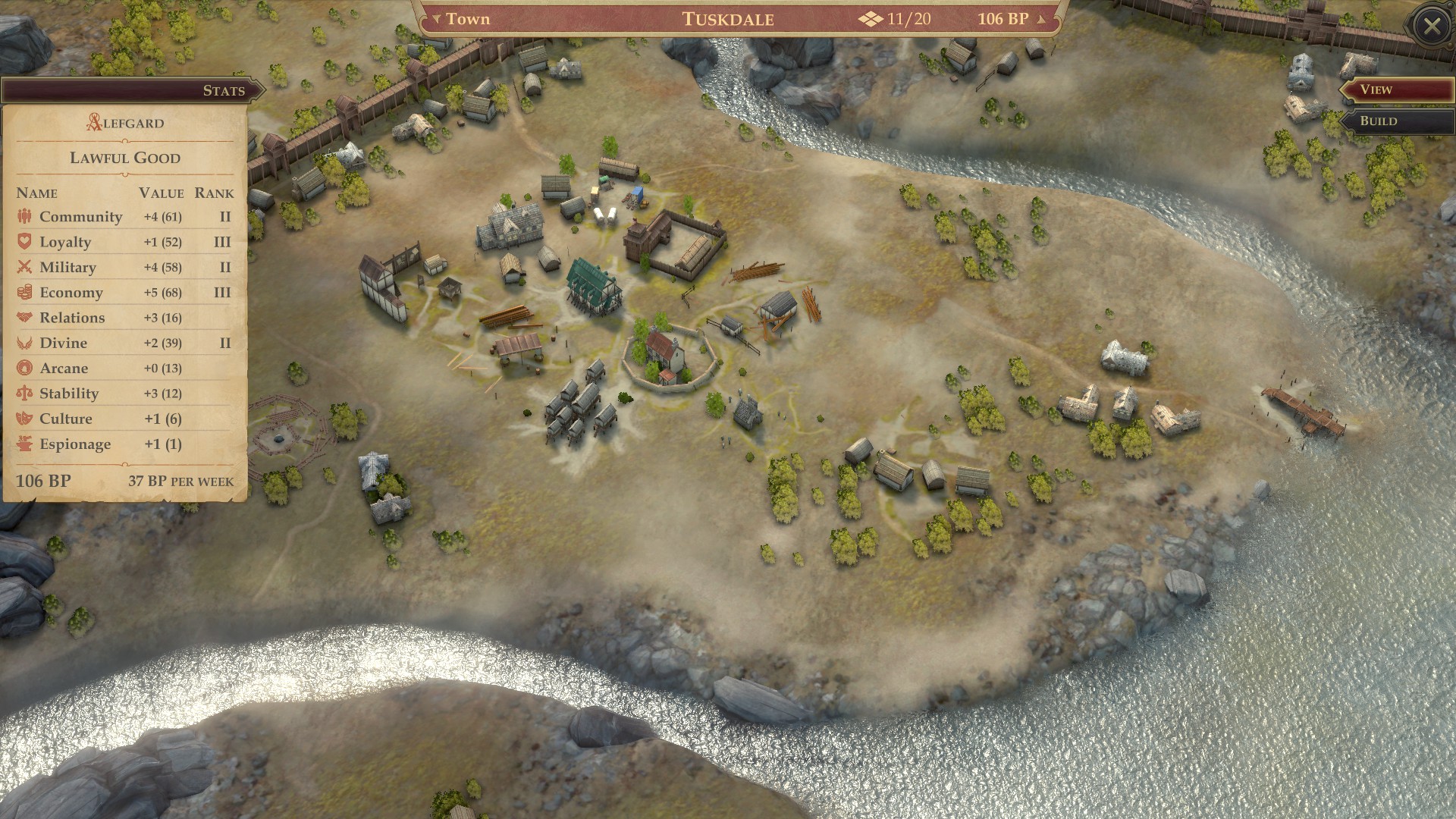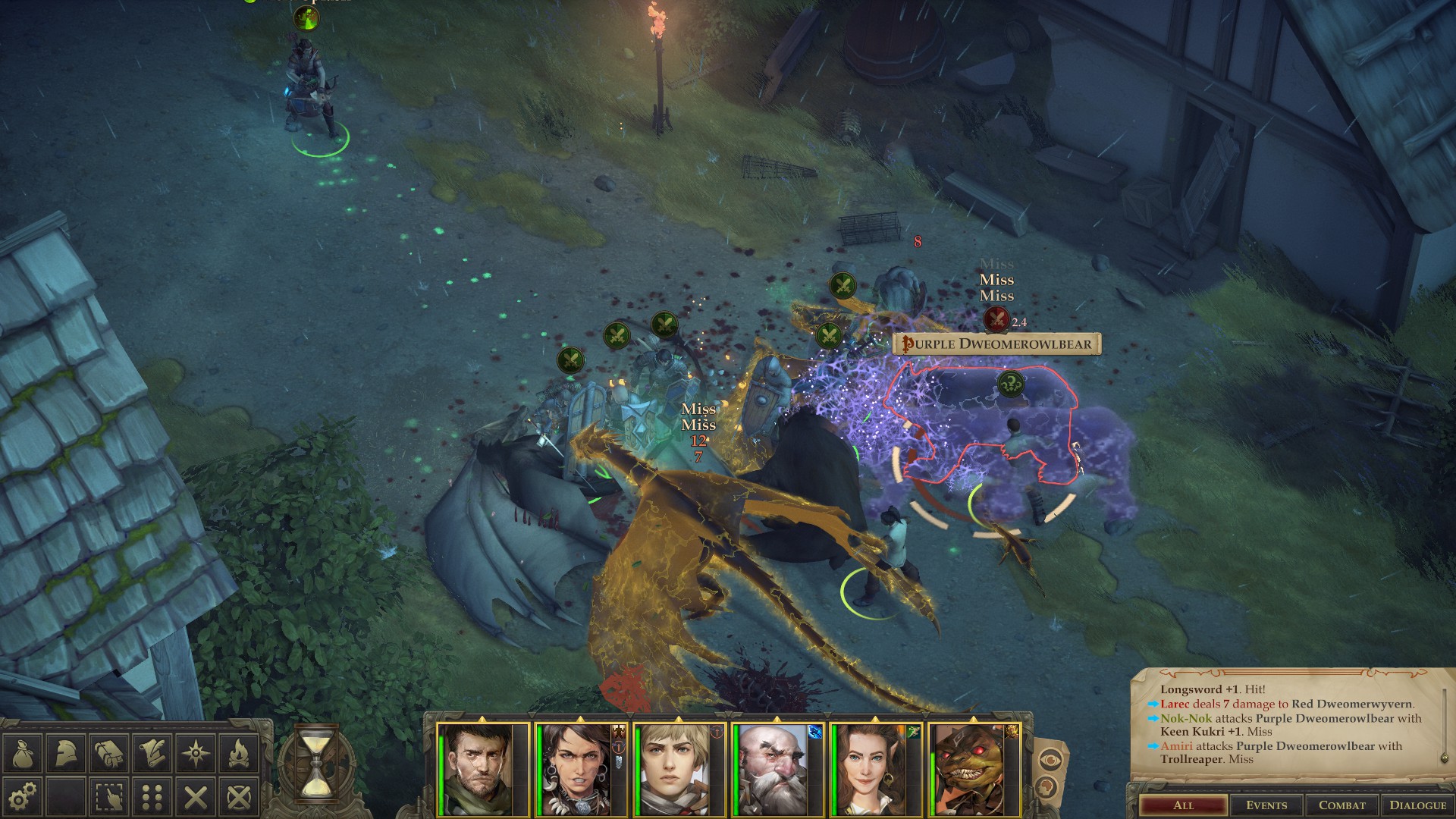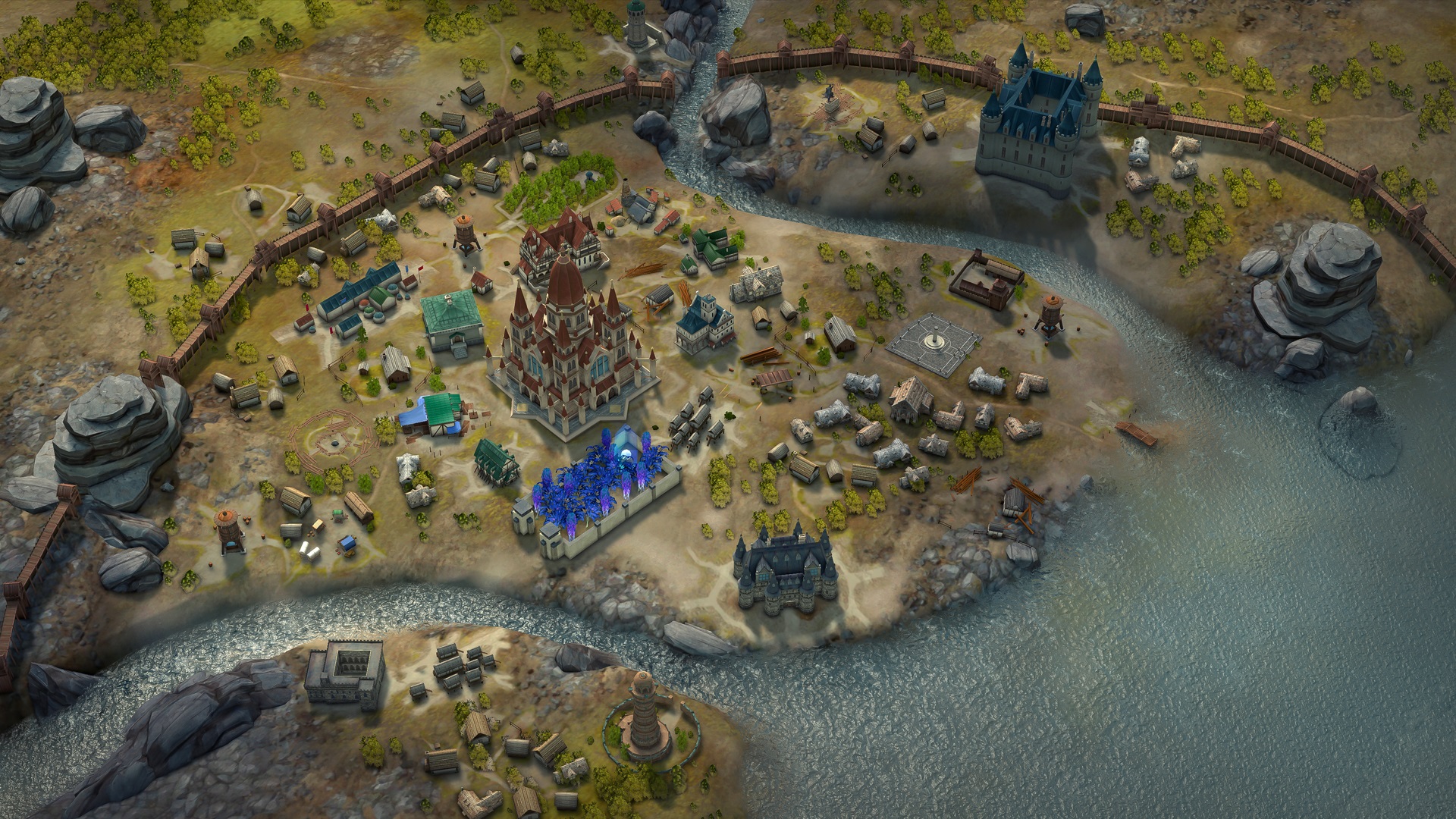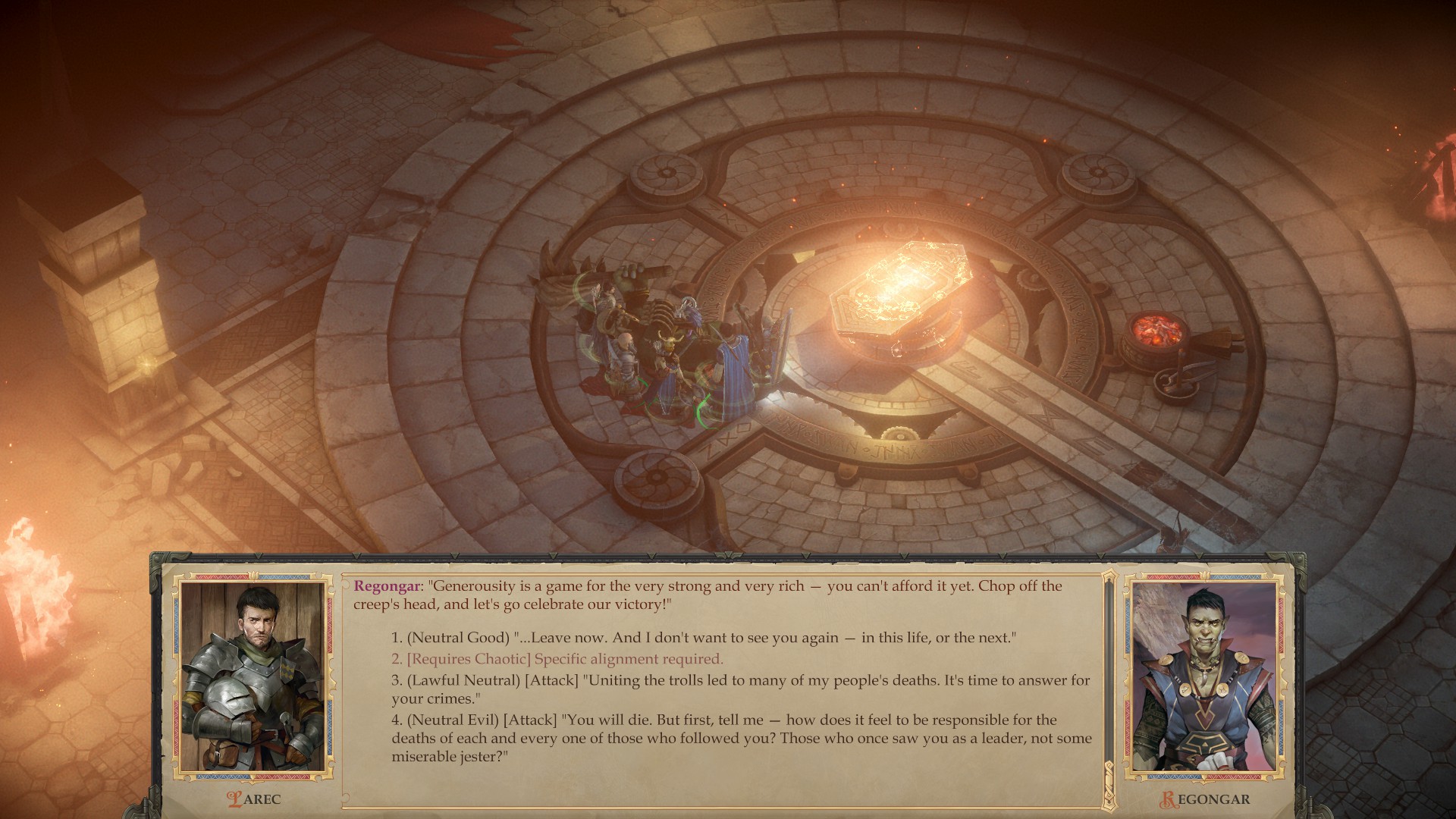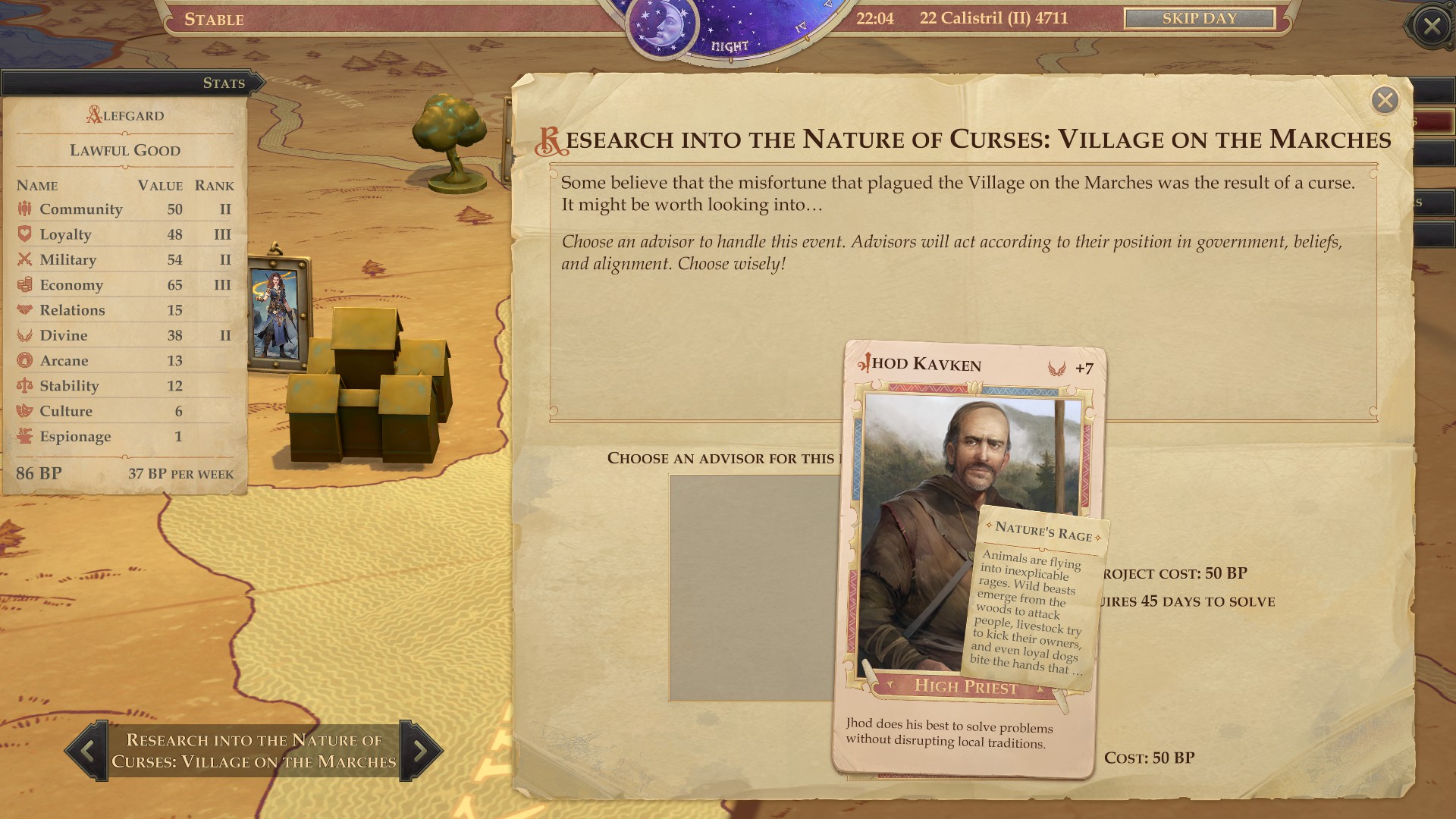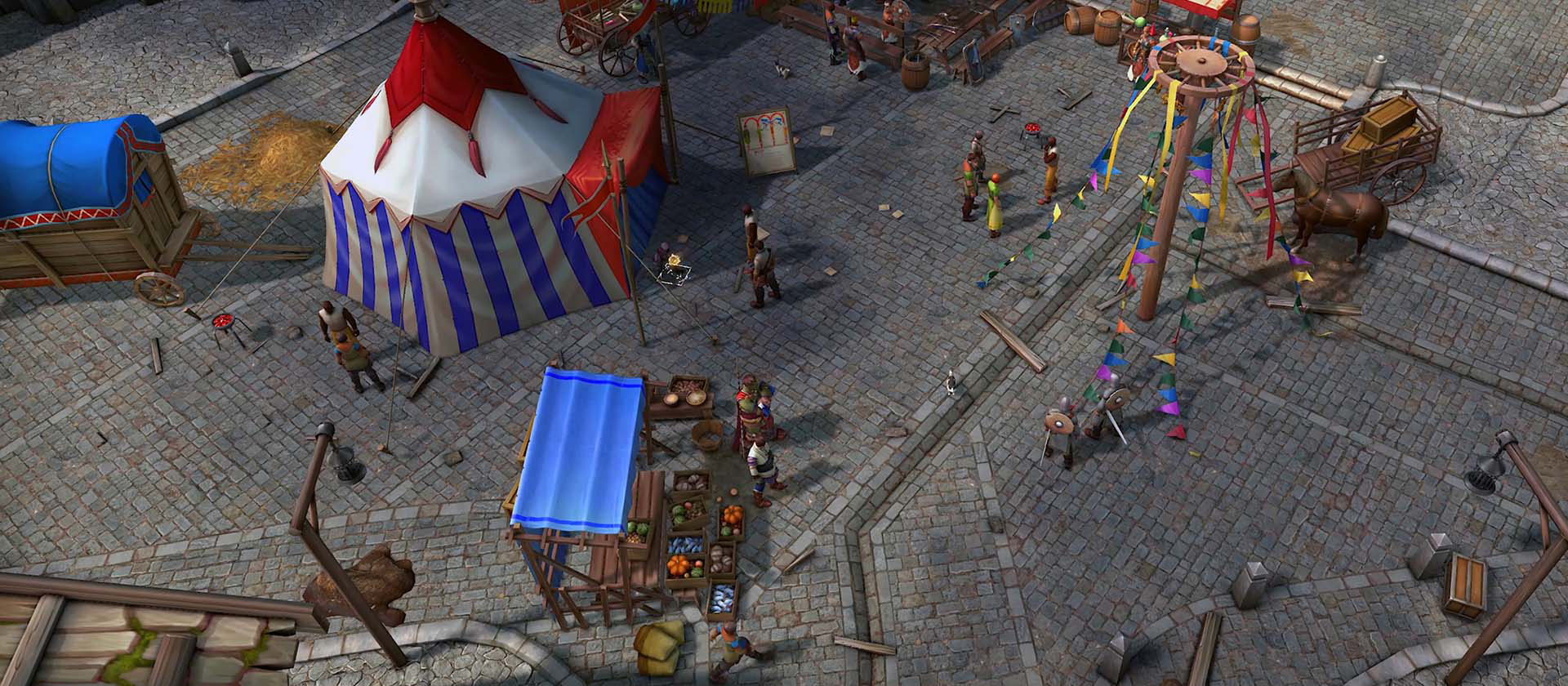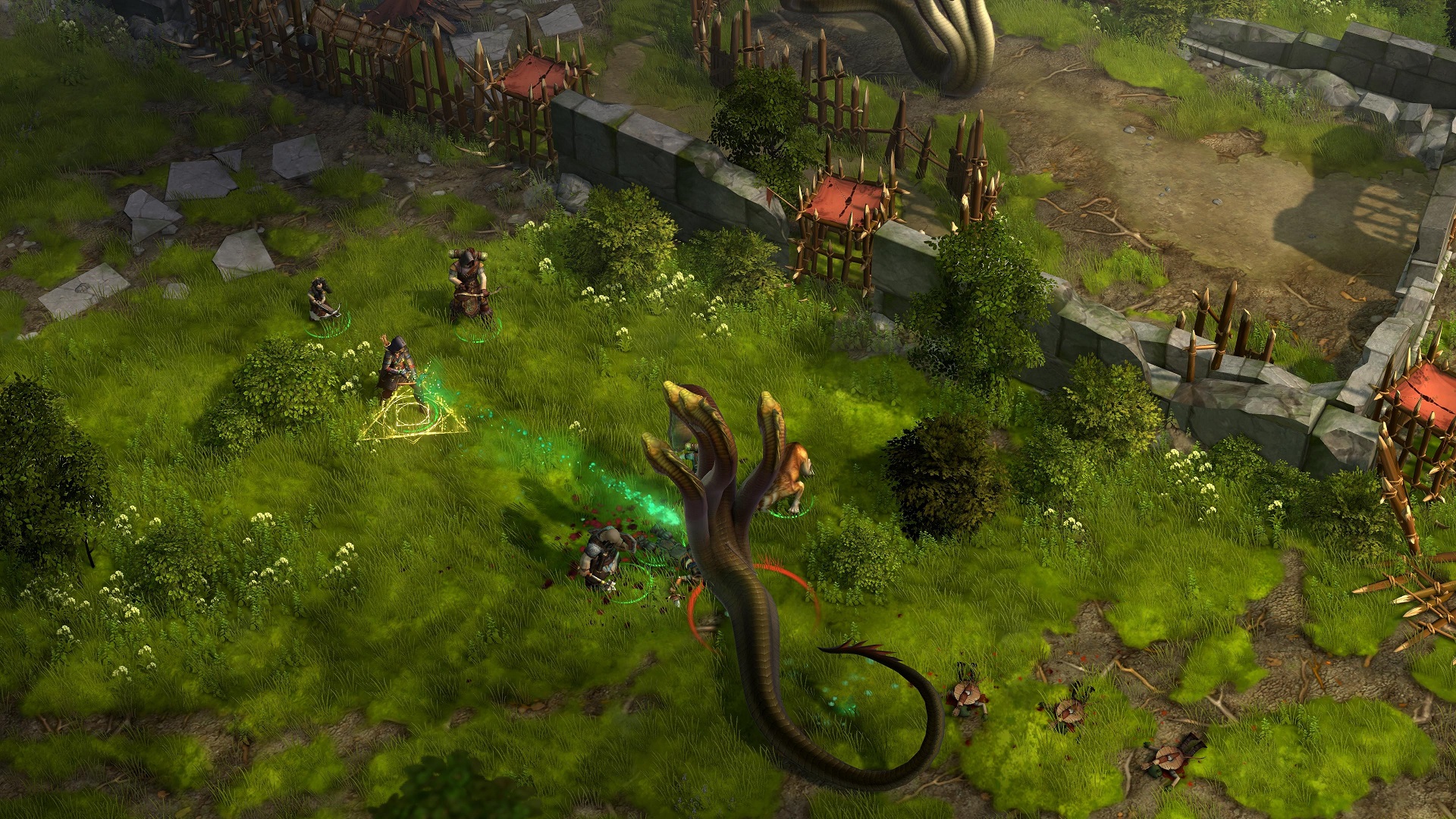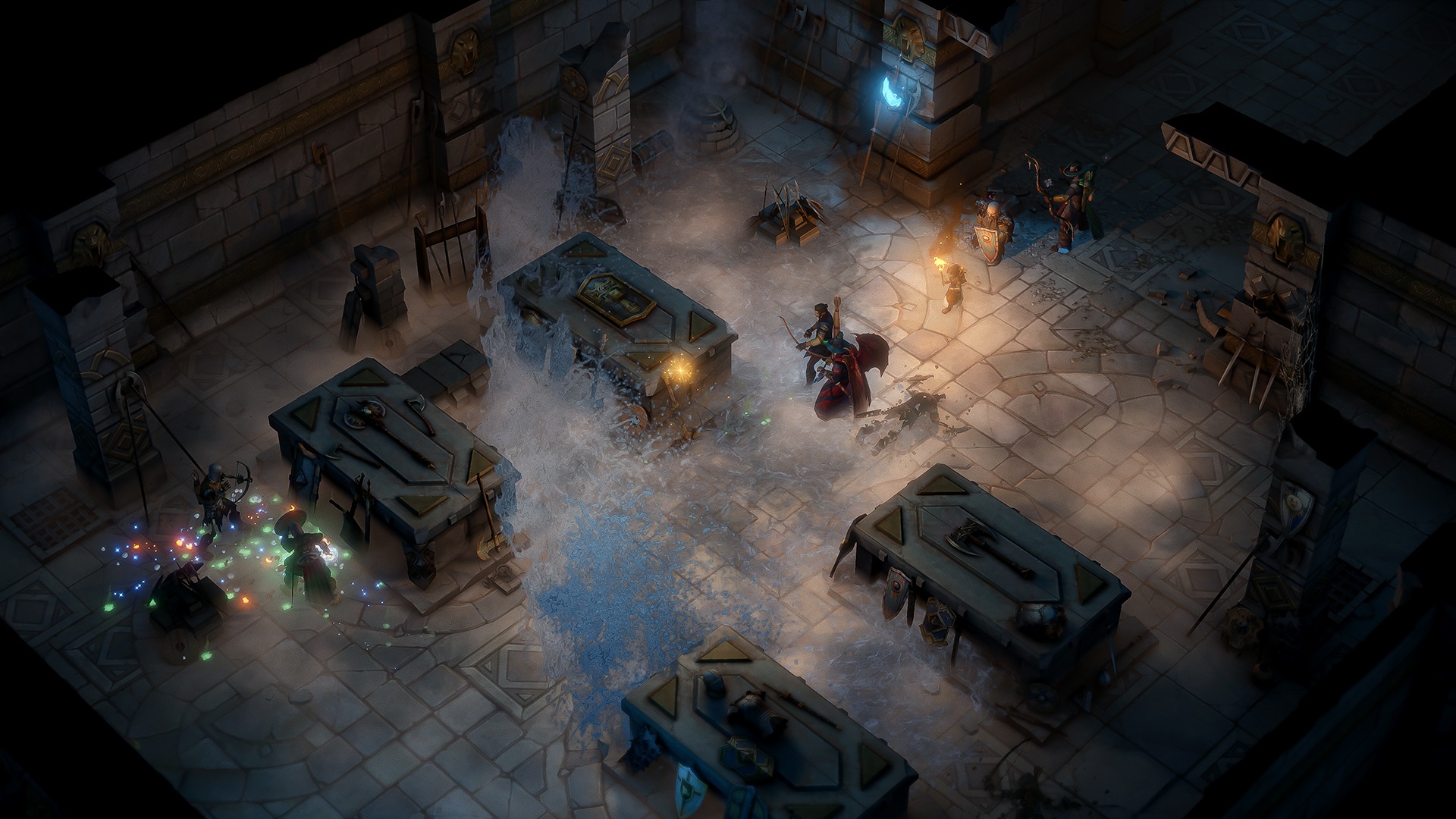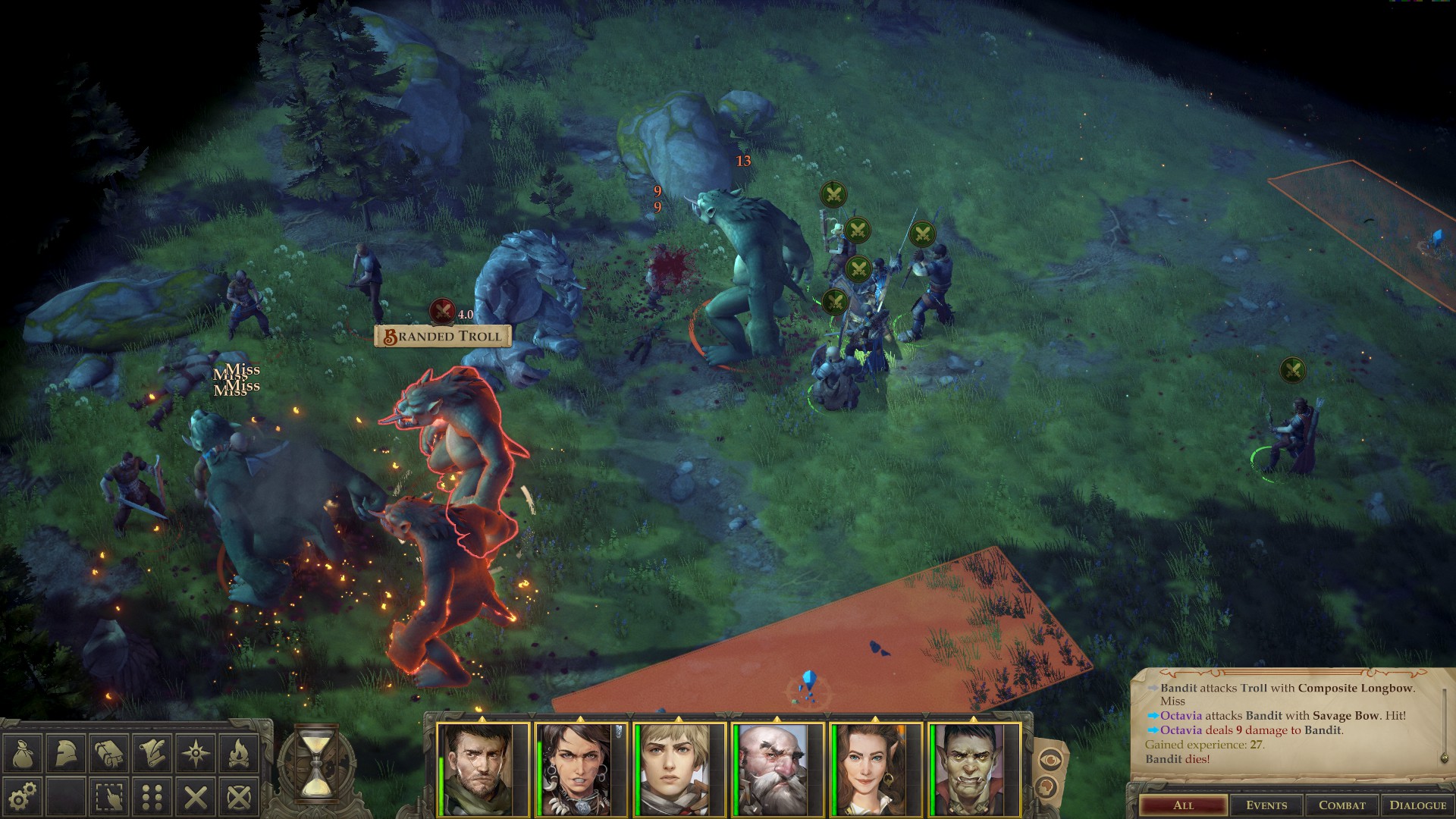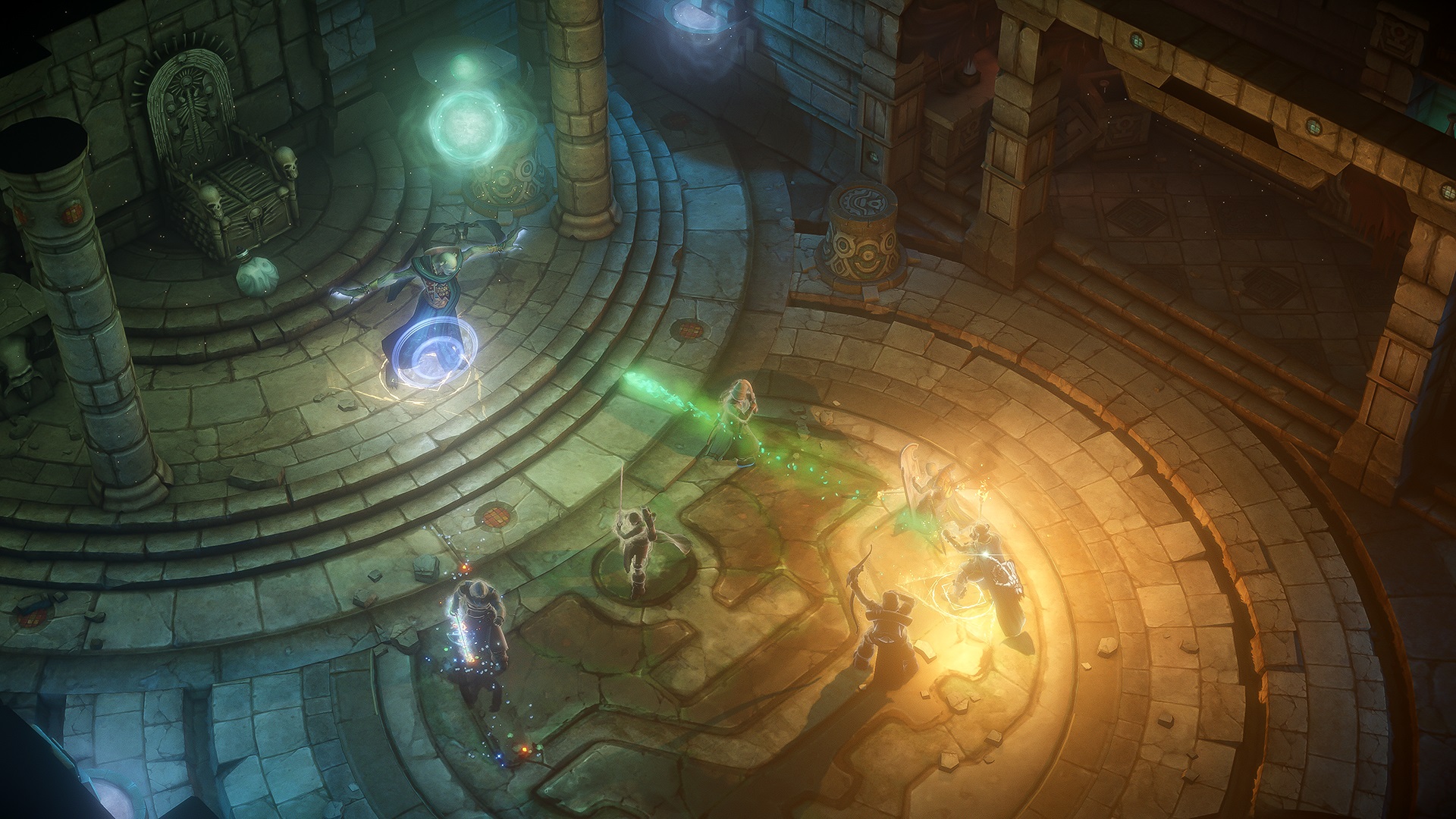Every game wants to be the next Baldur’s Gate, and with the Dungeons & Dragons license mostly forgotten (Unless you choose to remember the lackluster Sword Coast Legends), it’s long been the dream of CRPG fans everywhere that someone would eventually rise up to fill the void that BioWare and Obsidian left behind. Sure, there have been some great attempts, such as Obsidian’s own Pillars of Eternity series – and some not-so-great attempts, like Beamdog’s Siege of Dragonspear – but the best chance anyone has at being “The Next BG” is to probably just start over and do something new.
That’s exactly what was proposed on Kickstarter when developer Owlcat games decided to use the popular Pathfinder setting to design their own party-based CRPG. Their aim was to not only bring back the Baldur’s Gate style of gameplay, but to do it in a completely new setting and with new gameplay elements that would do for the genre what Interplay’s original masterpiece accomplished in the late 90s. A lofty goal, to be sure, but one that many gamers – myself included – desperately wanted them to shoot for.
The fruit of that idea now sits in front of us as Pathfinder: Kingmaker, and after 50 hours of playing it, both in pre-release beta and the official release, do I feel it has fulfilled its mission to recreate and improve upon that late 90s style of CRPGing? Read on to find out why I think this game succumbs to the “one step forward, two steps back” conundrum.
Pathfinder: Kingmaker
Publisher: Deep Silver
Developer: Owlcat Games
Platform: Windows PC (Reviewed), Mac OS, Linux
Release Date: September 25th, 2018
Players: 1 Player
Price: $39.99
While playing the game on Steam, a lot of friends messaged me and asked if it was a worthwhile purchase. The amusing thing about this is that depending on which section of the game I was in, my responses varied from “You need to play this at least once before you die” all the way to “This is the digital equivalent of Chinese water torture”. I eventually started replying with a blanket statement of “It’s hard to explain” and told them to wait for my review.
Let’s get one thing out of the way right now: The game’s combat, equipment, feat, skill, and underlying gameplay systems are all phenomenal. It takes standard 3.5 edition D&D and ups it a couple factors by giving you neat features no other D&D game had, but should have had. Things like being able to toggle power attack and cleave, and changing those two feats so that they actually do something meaningful instead of being rarely used situational skills. Or add prestige classes that can be taken almost immediately after starting the game as well as give you a truly gargantuan amount of feats to choose from during each and every level up screen. I simply couldn’t be happier with how the actual gameplay turned out.
While it does have some very high peaks and low valleys in terms of difficulty, that’s not neccesarily a bad thing. Though I think the developers made a big mistake by placing overpowered mobs in the wrong places (Let’s not throw damage resistant 26AC werewolves at a level 2 party in the second area of the game, ok?), it’s not that damning to just wait a few levels and come back to stomp those enemies with better equipment and a higher level party.
Combat is fast, exciting, full of gore, and plays like a “grown up” version of those old Infinity Engine titles. It’s a bit more tactical and noticeably slower than those games, but I felt it worked well for the kind of game they were pushing, since it’s meant to be a more robust answer to the trimmed-down aesthetic you see in other post-Baldur games like Pillars of Eternity and Sword Coast Legends.
Being able to right click toggle skills in the GUI, hot swap four different equipment load-outs, separating abilities from spells in the action bar, and giving you the option to snap/un-snap AoE spell radius circles are just some of the genius moves the developers came up with to make what is, in my opinion, the best real-time-with-pause CRPG combat that has ever been attempted.
The game’s combat and tactical style gave me huge ToEE vibes right out of the gate, and if Troika’s cult classic D&D game is your idea of the perfect CRPG, then you’re going to love at least half of Pathfinder.
I don’t know of any other CRPG, outside of Age of Decadence or Temple of Elemental Evil, that has dared to translate so many pen and paper skills to a video game before. The amount of realism it adds to the tired and stale 1990s formula is a breath of fresh air. It’s the same depth and combat realism that, until now, we were only getting from indie CRPGs.
Complexity is a double-edged sword though, and how you handle it determines whether you cut yourself or not…and looking at how they carried that fervent adherence to realism over to the rest of the game, it appears they’ve damn near beheaded themselves with it.
Realism works well when it’s used sparingly and its impact on gameplay is understood. Putting wind factors into a golf game where the breeze can affect your shot is a good idea. Allowing someone to manage the health and fitness level of their players in a football game can be fun. It can be said that, at least when used in a limited fashion, realism in a game can add to a player’s enjoyment by making them feel more in control of the character(s) they are playing.
The problem with Pathfinder is that the realism this game adds doesn’t give you control, it instead takes some level of control away from you and replaces the fun you were having with a large dose of tedium and frustration.
Imagine having a slow walking speed to begin with. Imagine that different levels of inventory encumbrance, even at low levels, greatly slowed you down as well. Imagine also that inclement weather, even light rain, decreased your speed even worse than the highest item weight did.
Now, imagine having to walk out of a dungeon with a lot of gear in your pockets and running smack dab into a raging rainstorm.
To illustrate this problem even further, picture a large overworld area that, when you waste 5 minutes trying to reach the edge of the screen through a rainstorm and a heavy backpack, won’t even let you leave until you sift through your gear and drop a few dozen things so you can make the encumbrance-reliant horseback ride to your castle.
I would have accepted this, since many games are guilty of similar crimes (Fallout, Elder Scrolls), but Pathfinder’s strict laws of realism did not simply end there.
Take for instance the map traveling you do in-between places of interest. Your party has to camp to rest, which is fine, but due to the slow speed and the fast passing of time in relation to your walking, you can barely get to the next way point on the map until you have to sleep again. Of course, you can ignore your party member’s pleas for shut-eye, but if you do, guess what? Your traveling speed decreases even more.
Even when you do give in and sleep as the game requires, you have to go through a camping mini-game where you set up guard duty, determine who cooks the food, who goes on hunts, and what skills are used to protect against attacks. While that in itself sounds fun, it comes tied with needless realism that only serves to make the game more frustrating.
How so? Well, imagine having a rule where anyone wearing medium or heavy armor has to take it off to sleep, so if you get attacked at night you enter the fight naked. Also imagine that, at least early on in the game before you can get your nature lore skill sufficiently high enough, your campsite is attacked 2-3 times a night.
I hope your inventory isn’t still causing encumbrance or (god forbid) it’s raining, because if it is, you’ll be picked off before you can even move a few feet. There are other little annoyances related to the game’s obsession with realism, but they are tied to the much-hyped “Kingdom Building” component that Pathfinder was built around. Which brings us to the game’s most disappointing misstep.
On the surface, the kingdom building mechanic seems like a great idea. After all, other CRPGs have tried it and succeeded, and what could be wrong with fleshing the system out a bit and improving on it? Games like Neverwinter Nights 2, Pillars of Eternity, and even console titles like Suikoden have handled it brilliantly, but they did so in very limited and streamlined ways.
Why not add more depth and realism to it in order to give the player more control over their story? And that’s the problem. The design choices they’ve made take away player control and, in the end, do not add much to the story either.
To start with, the kingdom building “mini-game”, since that’s what it essentially is, has turned out to be nothing more than an extremely stressful time management sim. Though it attempts to borrow from Dragon Age: Inquisition in the way that advisers are appointed and then assigned to varying tasks around the countryside, Pathfinder lacks any of that game’s quality of life enhancements or intuitiveness.
Events that happen in your kingdom pop up at random intervals, and it’s your job as baron to see those problems addressed in the best way possible. While that seems easy, you have to understand that time is constantly ticking, and each event has a certain amount of days it will take to complete, and while it is underway, the assigned character will be unable to do anything else.
This wouldn’t be a problem if you knew, at least partially, what events were coming up a week or so ahead of time, or were at least given some leeway in how you assign them. Unfortunately, this isn’t the case, and many times I lost considerable amounts of loyalty/economy points for my kingdom due to me having a crucial event arise but the only diplomat who could attend to it was on a 60 day un-cancellable mission.
Now this is assuming you’re in your throne room at the time these missions arise and you can handle them almost immediately. Try to guess what would happen if, as I mentioned earlier, you’re slightly encumbered, walking in the rain, lacking in sleep, and caught a few thousand miles away in a main story quest. If you’re anything like me, you’ll curse at your screen, exit the game, and take a break from it for the rest of the day.
Granted, there is supposed to be a feature that lets you remotely handle business at the castle as long as you’re within a territory you currently own, but since you’ll spend 90% of each chapter fighting enemies in new territories that you’re still trying to claim, it’s a bit useless.
Furthering the complication is that I never got such a feature to work with my game, and the icon to go back to the throne room only appeared when I was less than a day’s walk from the castle, which didn’t make sense to me, and often caused me to quit the game out of frustration when I ended up missing an important kingdom quest while out gallivanting with my party members.
Of course, your punishment for not being able to predict the future will be waiting for you when you load the game back up again.
Though perhaps punishment is too strong of a word for what goes on after you fail. Sure, your kingdom can collapse and you can even “lose the game” due to your spectacular fumbling of governance, but you’d really have to try hard to get to that point. While it’s true many of the main and side quests have a time limit that, if passed, results in them failing and possibly ending your campaign (And not all quests show their time requirement), that amount of time is usually pretty fair.
The truth is, what you do in the kingdom management mode has very little effect on the rest of the game. It doesn’t open new quests, doesn’t unlock new dungeons, doesn’t add new party members, and doesn’t give you new abilities or alter the plot in any major way. All it does do, on rare occasion, is unlock a new merchant (Such as the artisan that can repair artifacts) or line your pockets with gold.
As much fun as it is to see your kingdom grow and mature, as enjoyable it may be to annex neighboring territories and build your own towns on them, and as satisfying as seeing your townspeople throw you celebrations may be, none of it is as rewarding as it could have been or was promised to be. It feels like a wasted effort.
A good example of that wasted opportunity to create something fun would be when you finally upgrade your village to a full-fledged city. Once I spent about a thousand points and 25 hours of real world time upgrading it, I thought I could walk through it and see how it changed. I thought the incomplete buildings and ramshackle shrine that stood in the middle of the town square would now be finished and looking as grandiose as the game implied it would before I upgraded it.
No such luck, I’m afraid. The town looked just as dingy and uninhabited as it did before the upgrade. No actual change took place in the town itself, only in the stat sheet where the numbers detailing its advancement were shown and the sim-city-esque aerial view of it from where I placed buildings. Wonderful.
It doesn’t help either when to even get to the throne room to handle the business of your barony that you have to sit through half a dozen loading screens while flitting back and forth from one scene to the next.
Perhaps the most damning mistake of all is that the developers have made absolutely zero attempts to modernize their game. The cumbersome navigation of its many menus and sub-screens is so infuriatingly slow and laborious that there have been times I shut the game off simply because I didn’t feel like clicking through it all and needed a cold drink and a nap before I could gain enough mental stamina to put up with it for another hour or two.
I know it sounds like I’m exaggerating, but imagine wanting to go back to town and handle a few problems within your barony, but end up waiting through six or seven loading screens and a good 10 minutes of tedium just to appoint a ruler to the problem and head back out to the dungeon you were exploring.
First you’d have to walk back to the town on the overworld map, then click on the throne room icon in the town map, then walk to the war table in the throne room, then click on the appropriate area to assign the diplomat to, then walk out of the throne room, walk all the way through the entire town (Since there is no button to simply go back out of your throne room), and load the overworld map again.
Six loading screens, five menus, and probably 15 minutes of wasted time, all to do something that every other game that has had a similar kingdom management mini-game would do with a single button press. Is it realism that prevented Owlcat games from merely attaching a button that would warp you back to your throne room and back out again?
Is it devotion to Pathfinder lore that prevented them from having some magical artifact that would let me communicate with my advisors back at the castle while I’m half dead and 5 levels deep in a dungeon? I would assume so, and if you couldn’t tell yet, I’m not too pleased about it.
You know the game is in serious need of usability enhancements when you accidentally take the wrong NPC in your party and need to go back and swap them out for another, but have to go through the entire main capitol town and load 3 screens worth of kingdom navigation until you walk into one of the only two areas in the entire world that allow you to alter your active party roster. Just writing all of this is making my left eye twitch.
To be fair, you can shut off Kingdom management entirely. Due to my desire to finish the game and begin this review I did in fact do just that. Unfortunately, I realized very quickly that you miss out on half the game’s major story points and that while not handling your kingdom stripped the game of its tedium, it also had the unintended side effect of removing its personality as well.
You miss out on the foreshadowing of future events, the interactions between you and your counselors, the slow building up of your empire and you don’t get the satisfaction of seeing it grow. It does hurts a little bit, truth be told. So I reloaded an older save to where I still had it turned on and continued playing with it. I still don’t know which I prefer, and that bothers me.
Why they couldn’t have thrown in a carrier pigeon or “magic mirror” mechanic that lets you communicate with your castle while out adventuring is beyond me. I understand the value they place on realism and how they want to stay true to Pathfinder lore in order to establish a strong core to build a new intellectual property on, but “quality of life” enhancements are the big thing in gaming now, and unless you want to limit yourself to the hardcore “play 50 hours a week” types who seek out unweildy, aggravating indie CRPGs to brag about having beaten, then you better learn how to increase the usability of your game a tad.
So the Kingdom management isn’t all that we’d hoped for. Fine. You can shut it off and be done with it, or just half-heartedly engage in it just enough to keep the game from failing but still see all the plot points it presents to the story. No problem. As long as the gameplay, character interaction, and plot are strong, it’ll make up for it, right?
Let’s explore the party roster first:
Amiri, the barbarian girl you get early on, is a stereotypical “Men are holding me back” feminist that constantly (and I mean constantly) goes on rants moaning about how the men in her village were sexist against her. I normally wouldn’t be phased by it since this character type is common in fantasy stories, but how she drones on and on about it tested my patience.
Her companion quest is one giant cringe-fest where you have to engage with a rare boss monster and allow her to fight it by herself, and if you don’t turn off the rest of the party’s AI routines to facilitate that request, she verbally assaults and admonishes you for thinking she was so weak that she needed her help.
The hilarious addendum to this quest is that if for some reason Amiri starts to lose any of her one-on-one fights, she cries out to your party to help her, and upon winning, still brags about how she doesn’t need any men and can do things by herself.
To be honest, I don’t know if the entire quest is meant to be serious or if it’s just meant to be making fun of this kind of female behavior. I’m leaning towards the former, though.
Another painful addition to the party roster is Valerie, a fallen (but not evil) Paladin that left her knightly order because…wait for it… They thought she was too pretty and wouldn’t stop complimenting her. Every dialog with her, especially the romance-related ones, are filled with her getting rude with you for even daring to compliment her. It’s equal parts hilarious and sad.
There’s also the resident Mary Sue, the halfling girl named Linzi who also acts as the story’s narrator. Her companion quests basically revolve around you constantly telling her how amazing she is and how she is a gifted writer and her teachers back at the university were all closed-minded dunderheads who were holding her back with their devotion to tradition.
There’s even one instance where she steals a large sum of your kingdom’s treasury to start a book publishing business and you are forced to laugh it off and tell her she was completely in her right to take the funds to live out her dream. My eyes rolled so hard they nearly ended up on the floor.
There’s also Octavia, the typical promiscuous progressive who is hugging trees and preaching tolerance one minute then primping herself and flirting with everyone the next. She’s not as hideously ignorant as the aforementioned women, but her unrealistic approach to every situation makes her a very saccharine character, and one that were it not for her stats and how well she works as an arcane trickster, I would’ve never used in combat.
Somewhat amusingly, the only decent and entertaining character is the supposedly unlikable halfling alchemist, Jubilost. He’s haughty, over-confident, highly fond of capitalism, extremely logical, doesn’t care about anyone’s feelings and is as straight-laced and uncomplicated as a fantasy character can ever hope to be. He is essentially written in such a way that you can tell the writer was trying to make the player hate him, but he comes off looking just the opposite.
Jubilost can be appointed as your minister of the economy, and when you do so, he tinges every decision with subtle putdowns while belittling anyone who tries to inject “feelings” into matters of state. It’s for that reason alone I found him so relatable, since everyone else who surrounds you seems to think monster attacks, invading empires, and ancient curses can all be wished away with positive vibes, while Jubilost correctly admits that it takes money, personal sacrifice, and hard work.
Earning a respectable nod would be the Chaotic Evil goblin rogue, Nok-Nok, who you can recruit a bit farther into the game. He’s not too bad of a thief, and while you would expect his alignment to mesh with a Paladin hero, I went through the game as a Paladin and had no problems with him. In fact, his attitude is such that he doesn’t care about anyone or anything and would rather snatch nearby chickens to eat while the party is talking with an NPC. He does an admirable job of being this game’s comic relief, if nothing else.
Overall, the character roster is a bit weak, though I loved having an emo dwarf cleric and an undead elf on my team who didn’t try to murder the rest of my group in their sleep. I also enjoyed the half-orc Magus (and one required homosexual spellcaster) who is a completely overpowered tank mage that has an ability to use touch-range spells with his equipped melee weapon…a skill that allows him to cut through the game’s difficulty in the cheesiest way possible. So yes, the characters are a bit underwhelming…but how is the story?
It’s serviceable.
What I mean by that is it gets the job done. Partly due to the fact that the plot is delivered in drips and drabs through foreshadowing in the kingdom management quests, there wasn’t much that happened that ever made me anticipate getting over the next plot point and seeing what would occur next. The story just slowly plods along, like everything else in the game, and the payoffs at the end of the chapter are just a storybook vignette and a segue into the next great catastrophe that you have to deal with.
In truth, none of that bothers me, what does bug me is the fact that nothing in this game seems “finished” or fully fleshed out. Outside of the wonderfully crafted combat and 3.5-style game rules, everything else is bogged down by tedium and poor design. It’s obvious the developers are new at this, since they have no idea how important quality of life and usability enhancements are, especially in an RPG.
Their inexperience is also evident in the fact that the game has been out a week, received 4 patches in the time, and the game’s biggest problem – the long load of the intro screen – was “solved” by just putting a warning telling users to expect an unusually long load time.
There was a chance to craft a beautiful game here. An RPG that would’ve blown every imitator out of the water and been the replacement for Baldur’s Gate that people have been craving for a decade-and-a-half. Unfortunately, mired in poor design decisions and needless fluff, Pathfinder: Kingmaker is not that game.
Granted, it is fun due to the great combat, faithful interpretation of its D20 rules, 50+ hours of content, and supremely large overworld, but the tedium and lack of player comforts it remains saddled with bring it down substantially. Perhaps it was too lofty of a goal for an inexperienced developer to handle, or perhaps the resources weren’t there to make the kind of game they wanted…but whatever the reason was, this is the sort of CRPG you need to accept several major flaws with in order to gain any enjoyment from.
If you have the spare time, patience, and forgiveness to look past the jumbled mess of ideas and poorly implemented features this game was released as, then you’ll be rewarded with a gorgeously detailed combat system and a very large world to test your favorite builds out in. If not, however, you might just want to boot Neverwinter Nights 2 up again and see how this was done better 12 years ago.
What’s so sad about Pathfinder: Kingmaker is that the combat, spells, classes, and actual gameplay are all so solid, but everything else is mired in poor planning and design. Had the Kingdom management mechanic been exactly like, say, Pillars of Eternity or Neverwinter Nights 2, then half of this game’s problems would instantly disappear and you’d be looking at one of the best adaptions of tabletop the genre had ever produced.
Perhaps some will like the realism and enjoy the long periods of inactivity the game makes you put up with. Maybe they’ll enjoy the massive time sink (with little payoff) that the kingdom management mini-game represents. Maybe they’ll love walking slowly from zone to zone. Looking at the forums, I think most folks agree with me when I say that it’s holding the game back from being something greater.
Pathfinder: Kingmaker was reviewed on Windows PC using a review copy provided by Deep Silver. You can find additional information about Niche Gamer’s review/ethics policy here.
The Verdict: 7
The Good:
- Faithful recreation of the tabletop game
- Excellent combat that challenges you and stays exciting through 50hrs of play
- Large overworld, tons of quests and content to battle through
- Character creation and development is some of the best in the genre right now
The Bad:
- Absolutely abysmal end-user experience, poor usability and interface problems
- Kingdom Management is a garbled mess of half-finished ideas and tedium
- Very few of your decisions in the kingdom management portion have an effect on the actual game, and vice-versa
- Baffling choices in gameplay design hold back enjoyment by adding frustration in areas where ease of play is desired/valued.
